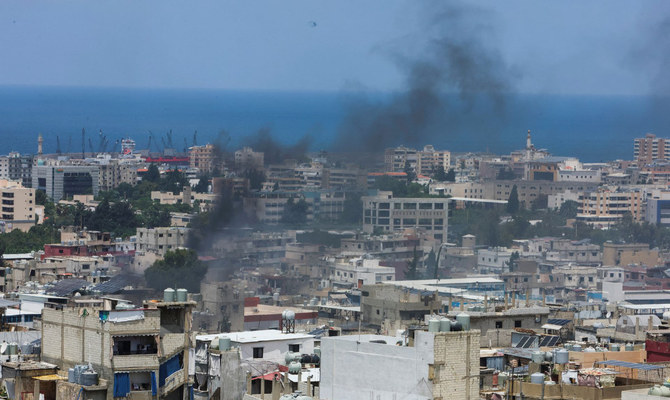
- ARAB NEWS
- 02 Jul 2025

BEIRUT: A Palestinian joint security force was deployed on Monday to two hot spots in Ain Al-Hilweh refugee camp. It marked the beginning of the implementation of the terms of a ceasefire agreement reached 12 days ago in an effort to end bloody clashes between Fatah and extremist groups in the camp.
The force includes military representatives of all Palestinian groups involved in the camp, including Hamas, Osbat Al-Ansar, and Al-Haraka Al-Islamiyya Al-Mujahida.
Maj. Gen. Ahmed Al-Ajouri, commander of the joint force, told Arab News that 45 soldiers and officers took part in the deployment. It went smoothly and without obstacles, he added, and there was excellent cooperation between all of those involved.
They were posted at Al-Buraq point, which separates Al-Safsaf neighborhood, which is controlled by extremist groups, from the Baraksat area, controlled by Fatah, and at the border between Al-Tiri and extremist-controlled Al-Ras Al-Ahmar.
Al-Ajouri said there is “an atmosphere of relief among people in the camp” following the deployment. He added that “things are positive” and the next step will be the withdrawal of armed militants barricaded inside a schools complex run by the UN Relief and Works Agency for Palestine Refugees in the Near East. The Palestinian Joint Action Committee will hold a meeting this week with both sides involved in the conflict to arrange the simultaneous withdrawal of their forces from the schools, he said.
The playground of the educational compound was turned into a battleground between members of extremists groups occupying four schools and Fatah gunmen holed up in four other schools.
Regarding the damage caused to the camp as a result of clashes in recent weeks, Al-Ajouri said: “There is varying destruction. It is not possible to calculate the damage before evacuating the places affected by the militants.
“When the second phase of the terms of the ceasefire agreement is realized, the implementation of the clause of handing over those wanted for the assassination of the Fatah leader Mohammed Al-Armushi to the Lebanese security authorities will become less complicated. This clause is the most important in the agreement and this file will not be closed until the wanted persons are handed over.”
Fatah accuses eight members of extremist groups of killing Al-Armushi in an attack at the camp in late July. The suspects are believed to be hiding in parts of the camp controlled by extremists, including Al-Taamir neighborhood, which is an extension of the camp on Lebanese land.
The assassination of Al-Armushi led to the outbreak of bloody fighting in the camp, during which dozens of Palestinians and Lebanese were killed or injured, including Lebanese soldiers, and thousands of refugees were displaced. Four previous ceasefire attempts failed to calm the situation.
Ghassan Ayoub, a Palestinian official responsible for the issue of wanted persons in the camp, told Arab News: “There are six points that are considered contact lines in the camp and the security force is supposed to deploy there to serve as separation forces.”
Efforts are now focused on restoring stability in the camp, he added, and this will be accomplished by apprehending wanted individuals under the terms of the truce.
“The essence of the understanding that occurred is a ceasefire and the handover of wanted persons hiding in Al-Taamir neighborhood, which is a Lebanese neighborhood open to the camp,” said Ayoub. “Palestinian forces do not enter Al-Taamir and it is the responsibility of the Lebanese state.”
The UNRWA said it is monitoring the security situation on the ground before deciding on its next step. A source close to the agency told Arab News: “Restoring work in the UNRWA schools complex is a complex issue.
“Upon completion of evacuating the complex of militants, these schools must be cleared of the remnants of the battles that took place, especially from possible bombs and, perhaps, mines.
“When clearance is announced, we will form engineering teams to find out the extent of the damage. Security assurances are required so that we can begin restoration.”
The source added that reports received so far suggest “the damage to the complex is significant and it is too early to investigate the possibility of allowing these schools to start the new academic year.”
The number of registered Palestinian students in UNRWA schools in the camp is 5,900. Transferring those students to nearby UN-run schools is not currently possible because those schools are already at maximum capacity catering to children whose families fled the camp during the recent fighting. Reports suggest about 1,000 young people displaced from the camp have been studying in other UNRWA schools, although the number fell to 700 after the ceasefire was announced, as some displaced families whose houses were not damaged have returned home.
According to the UNRWA source, the agency is considering a “double shift” mechanism in schools outside the camp to cope with the increased number of students who have nowhere else to study.